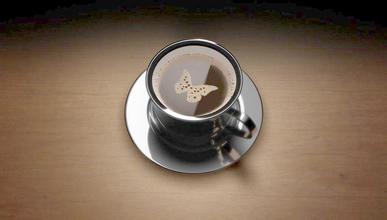The spread and Development of Coffee in China introduction to Cultural differences in Market Analysis
The spread and Development of Coffee in China introduction to Cultural differences in Market Analysis
Today, there are considerable coffee planting bases in Yunnan, Hainan, Guangxi, Guangdong and other provinces in China, and some world-famous coffee companies, such as Maxwell, Nestl é, Colombia and so on, have set up branches in China. They not only sell coffee products to China, but also purchase coffee beans from coffee planting bases in China, which not only promote coffee sales in China, but also promote the development of coffee planting industry.
In the 1930s, the earliest cafe in Shanghai opened on the Bund for foreign sailors to enjoy their coffee, perhaps with a sense of relieving homesickness. Coffee at that time was called "cough potion" by Shanghainese. Of course, this is just a segment of the Shanghai Cafe. In Shanghai at that time, there were many overseas Chinese who returned from overseas. They kept the habit of drinking coffee in their lives-not just going to the cafe. More often, they taste strong coffee in their own restaurant or living room.
But activities such as coffee and afternoon tea have changed since 1949. Before the 1980s, coffee was a strange word and a strange thing for most Chinese people. Although during the period, there were 3.4 yuan cans of Shanghai coffee on the shelves of Xidan Mall. And in the 1970s, some foreign-related hotels began to have their own coffee shops, but they needed foreign exchange coupons to pay, and it was clear that they were for foreign guests-the place and price of coffee were far away from ordinary people. It was not until the 1980s that people became familiar with coffee from advertisements. Instant coffee, for most people, they went through about a decade or so, thinking that "instant coffee is coffee". At that time, glass bottles containing "Nestle" or "McDonnell's" were often placed in cabinets or used as cups for owners to drink water in the office-and not just because they were thick and thick.
While Nestl é and Maxwell are promoting instant coffee to Chinese consumers, they are also investing in coffee plantations in Yunnan. In the late 1990s, most of the instant coffee drunk by Chinese people came from Yunnan. The move reduced production costs for the two foreign companies, but did not contribute much to the promotion of Yunnan coffee.
For Chinese people, for a long time, "coffee" and "instant coffee" are two interchangeable terms. Until the entry of Starbucks in the United States and teahouses in Hong Kong, people began to realize that coffee was not instant coffee, but something else. What is it? It is a stylish, Starbucks abstract painting, jazz and aggressive coffee aroma, and a half-tea and half-coffee drink in a teahouse such as "Yuanyang". Served in exquisite white porcelain plates, it is served with dishes by the waiter. The former, because it is more exotic and fashionable, has become another noun for coffee after "instant coffee". Most of the signs of "coffee and language tea" appear in cafes opened by Taiwanese or Singaporeans, which originally means that they drink coffee but are full of a casual "tea attitude". The atmosphere and feeling are still old teahouse-style social performances.

Important Notice :
前街咖啡 FrontStreet Coffee has moved to new addredd:
FrontStreet Coffee Address: 315,Donghua East Road,GuangZhou
Tel:020 38364473
- Prev

Coffee cloth powder technique video tutorial flower embossing shaking technique
Coffee cloth powder technique video tutorial flower embossing shaking technique powder pressing about the strength of the powder pressing problem is also a variety of statements, 5 pounds, 10 pounds, 20 pounds... Very few people know what these ghosts are, in fact, there is no need to worry about how many pounds of force to use, just remember to apply force evenly at all times, until the powder is firm and the surface is flat. If you use too much force, extract
- Next

How to open the filter bar of American coffee pot = filter paper for mocha coffee maker
How to open the filter column of American coffee pot = filter paper for mocha coffee pot 1. Please follow the following steps to clean the machine for the first time (1) add 5 cups of cold water to the coffee maker water tank as described above. Place the glass pot on the heat preservation tray (no coffee powder is needed for this cleaning process) (2) plug in the power supply, turn on the switch, let the water be fully heated and all drip into the glass pot (3)
Related
- What brand of black coffee is the most authentic and delicious? what are the characteristics of the flavor of the authentic Rose Summer Black Coffee?
- Introduction to the principle and characteristics of the correct use of mocha pot A detailed course of mocha pot brewing coffee is described in five steps.
- Which is better, decaf or regular coffee? how is decaf made?
- How much is a bag of four cat coffee?
- How about four Cat Coffee or Nestle Coffee? why is it a cheap scam?
- Which is better, Yunnan four Cats Coffee or Nestle Coffee? How about cat coffee? is it a fake scam? why is it so cheap?
- How about Cat Coffee? what grade is a hoax? which instant coffee tastes better, four Cat Coffee, Nestle Coffee or G7 coffee?
- Process flow chart of coffee making-Starbucks coffee making process what coffee tastes good at Starbucks
- The top ten best coffee beans in the world Rose summer coffee or Tanzanian coffee tastes good
- Yunnan four cat coffee is good to drink?_four cat coffee is a big brand? four cat blue mountain coffee is fake?

